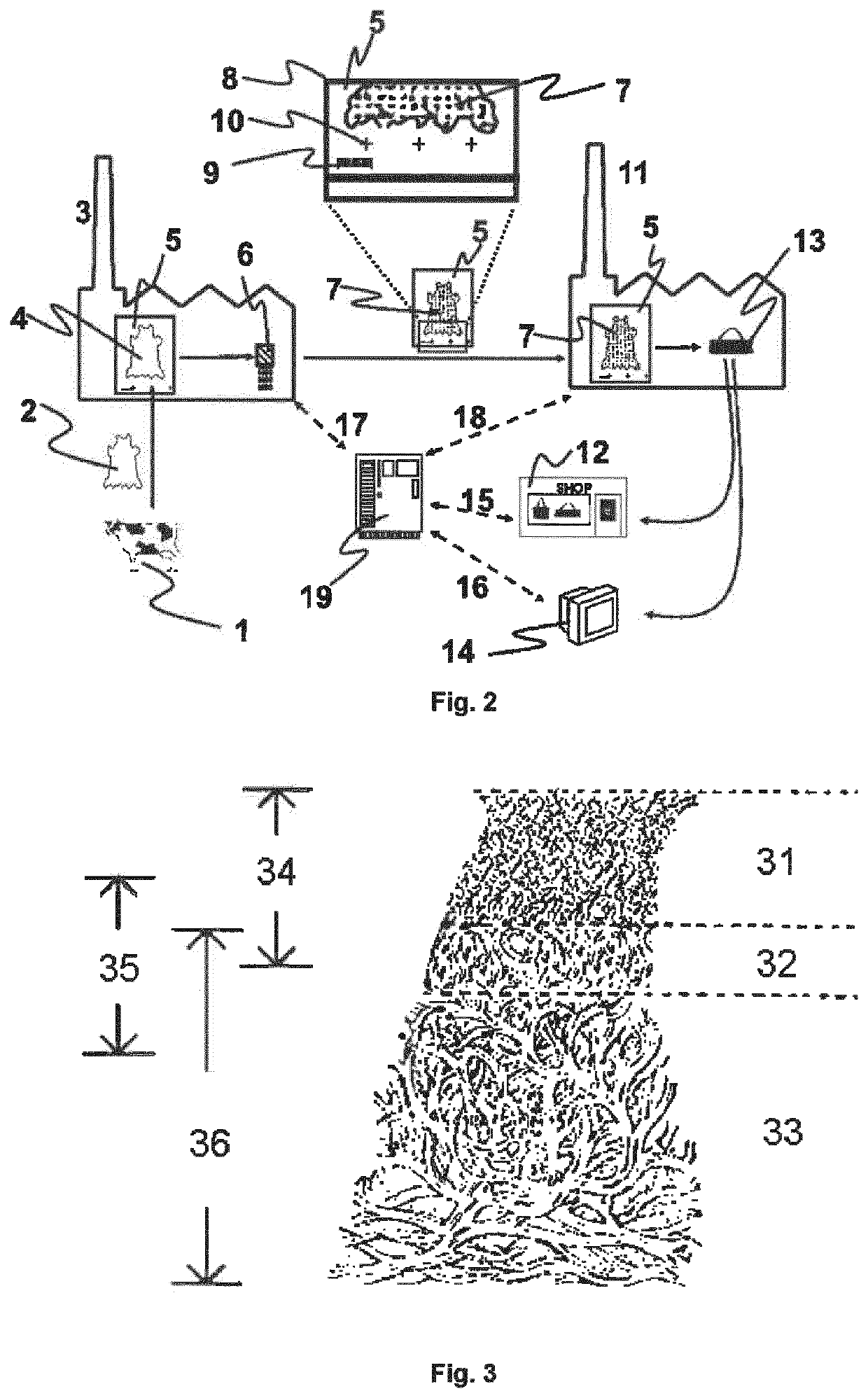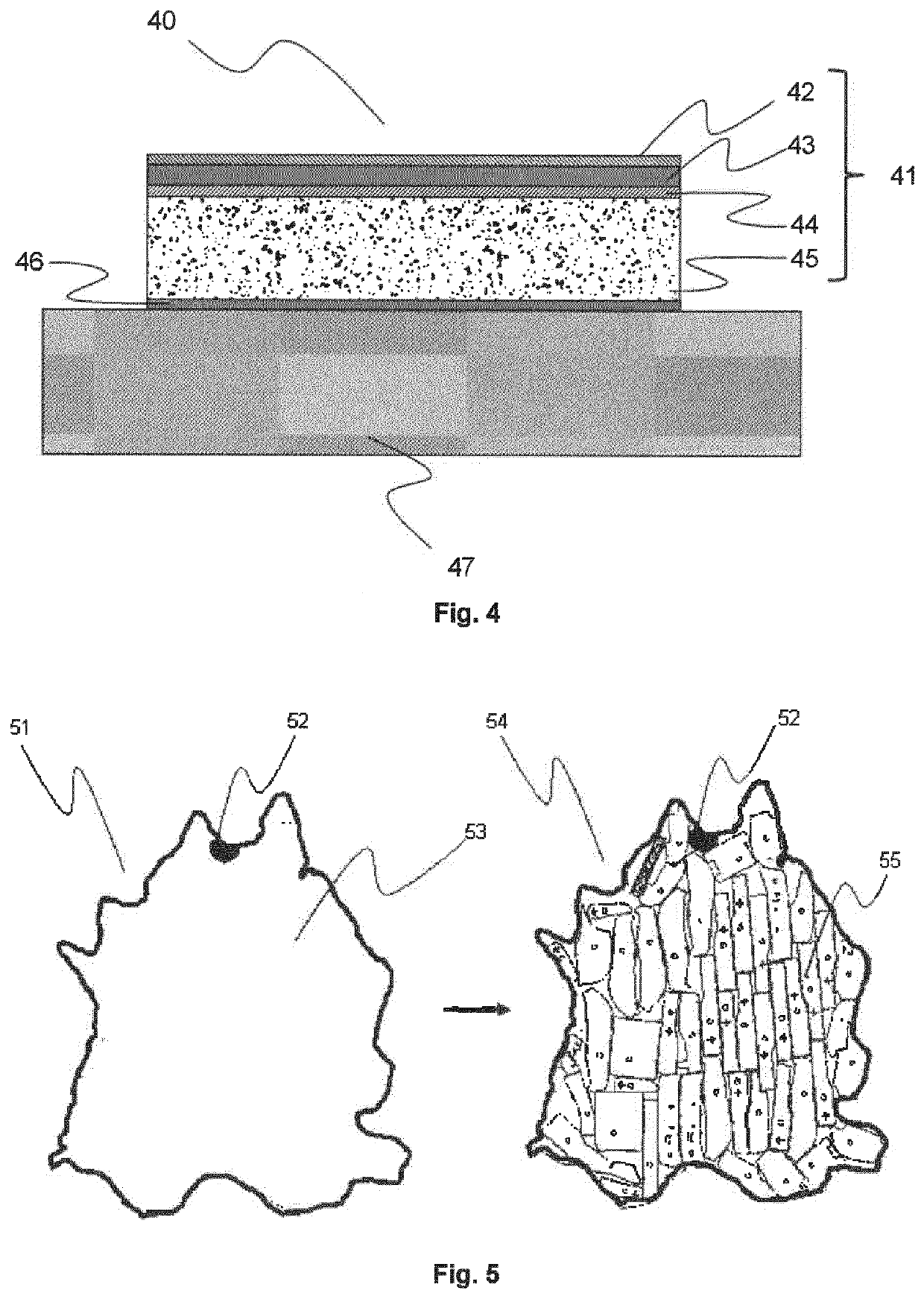Decorated natural leather
a technology of decorated natural leather and decorative elements, applied in the direction of dyeing process, leather surface finishing, polyamide coating, etc., can solve the problems of many solutions on finished leather that remain of inferior quality, high cost and time consumption, and high labor intensity of screen printing, so as to maximize decorative image, minimize waste, avoid errors
- Summary
- Abstract
- Description
- Claims
- Application Information
AI Technical Summary
Benefits of technology
Problems solved by technology
Method used
Image
Examples
example 1
[0201]This example illustrates the manufacturing of decorating natural leather wherein the leather is attached to a plastic foil coated with an adhesive.
[0202]Preparation of Pigmented UV Curable Inkjet Inks
[0203]First concentrated pigment dispersions CPC, CPM1, CPM2, CPY and CPK were prepared. Then these concentrated pigment dispersions were used to prepare a pigmented UV curable inkjet ink set according to Table 7.
[0204]Concentrated Cyan Pigment Dispersion CPC
[0205]A concentrated pigment dispersion was made by mixing the components according to Table 2 for 30 minutes using a DISPERLUX™ disperser from DISPERLUX S.A.R.L., Luxembourg. The dispersion was then milled using a Bachofen DYNOMILL ECM mill filled with 0.4 mm yttrium stabilized zirconia beads (“high wear resistant zirconia grinding media” from TOSOH Co.). The mixture was circulated over the mill for 2 hours. After milling, the concentrated pigment dispersion was discharged over a 1 μm filter into a vessel. The wt % in Table 2...
example 2
[0227]This example illustrates the manufacturing of decorating natural leather wherein the leather is attached to a paper foil using a spray adhesive.
[0228]Preparation of Decorated Leather LS2
[0229]A spray adhesive (Scotch-Weld 77 from 3M) was sprayed on the corium side of an A4 size piece of crusted calfskin leather from NUTI IVO, Santa Croce sull'Arno. The crusted leather was then applied with its corium side to an A3 size of Kraft paper. LS2 was written with a black marker as identifier on the Kraft paper not covered by the leather. The identifier was then covered by a piece of transparent tape.
[0230]The assembly of the Kraft paper and the crusted leather was spray-coated with a layer of the white base coat BC1 using a spray coat pilot mini gun from WALTHER PILOT and dried at a temperature of 60° C.
[0231]The spray-coated assembly was positioned on one of the six vacuum zones of a flatbed inkjet printer Jeti™ Mira LED from AGFA GRAPHICS NV and printed with a decorative image using...
PUM
| Property | Measurement | Unit |
|---|---|---|
| density | aaaaa | aaaaa |
| elongation at break | aaaaa | aaaaa |
| elongation at break | aaaaa | aaaaa |
Abstract
Description
Claims
Application Information
 Login to View More
Login to View More - R&D
- Intellectual Property
- Life Sciences
- Materials
- Tech Scout
- Unparalleled Data Quality
- Higher Quality Content
- 60% Fewer Hallucinations
Browse by: Latest US Patents, China's latest patents, Technical Efficacy Thesaurus, Application Domain, Technology Topic, Popular Technical Reports.
© 2025 PatSnap. All rights reserved.Legal|Privacy policy|Modern Slavery Act Transparency Statement|Sitemap|About US| Contact US: help@patsnap.com



